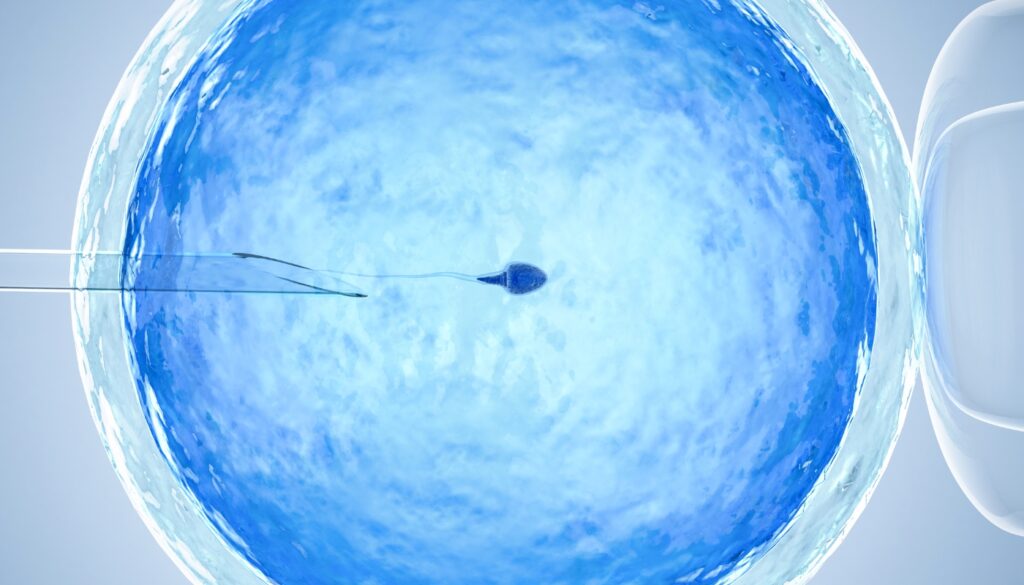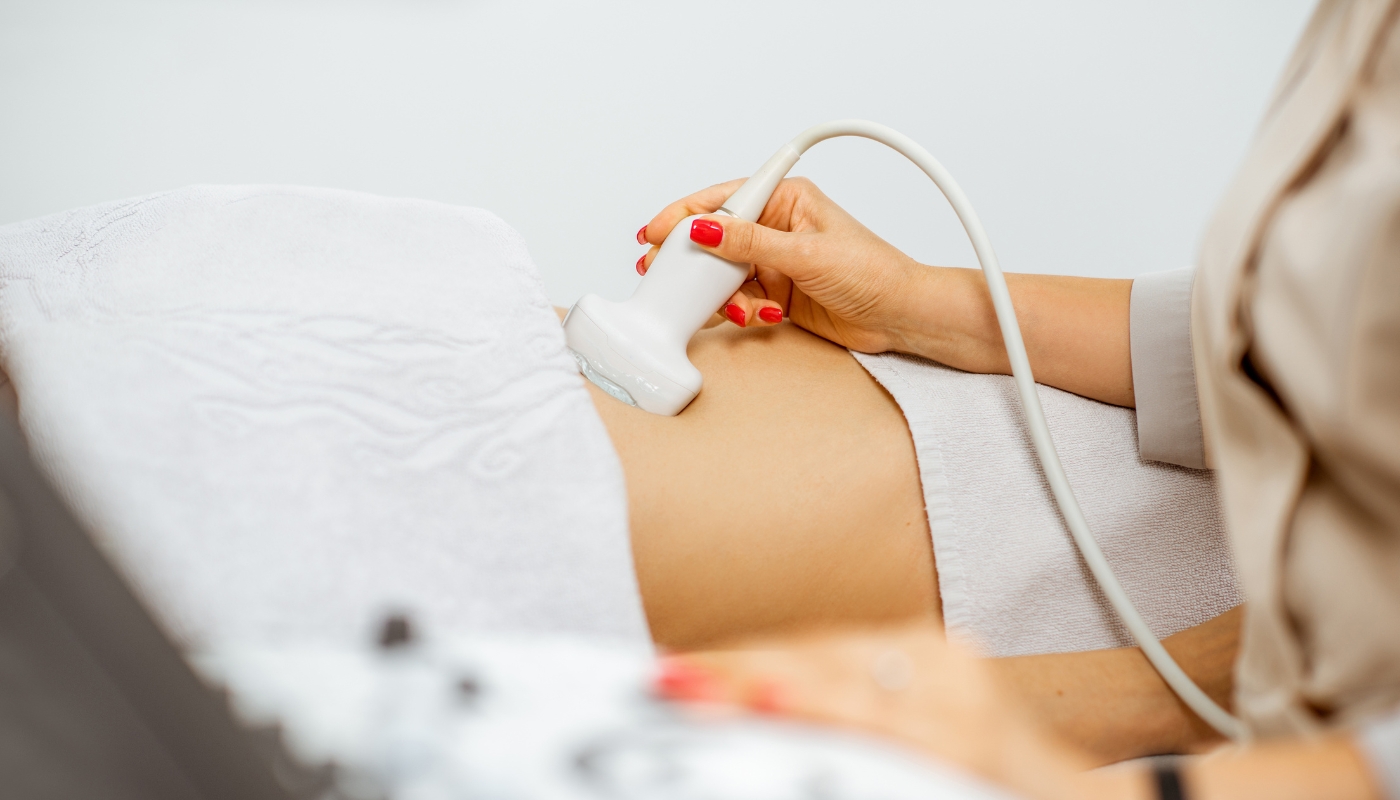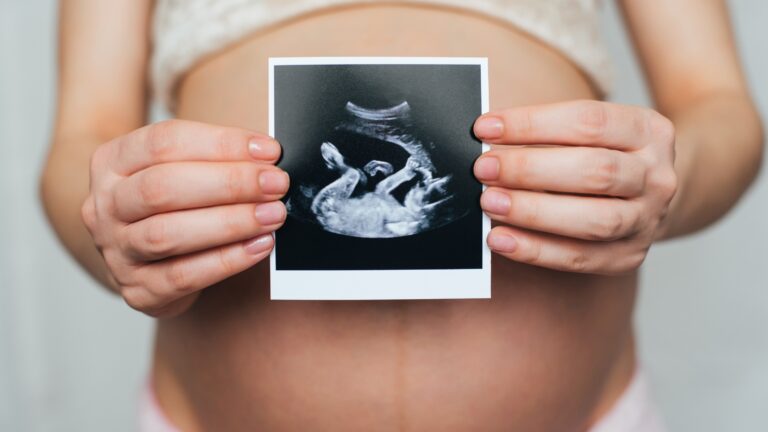Day 7 After Embryo Transfer: What to Expect
May 16, 2024
Preferred Fertility Concierge
Key Highlights
- The embryo transfer is a crucial step in the IVF process and marks the beginning of the-week wait period.
- Common symptoms after the embryo transfer include cramping, sore breasts, and changes in discharge.
- It’s important to note that not everyone will experience symptoms, and some have no symptoms at all.
- The two-week wait can be emotionally challenging, and it’s important to take care of your emotional well-being during this time.
- Maintaining a healthy diet and lifestyle can help the chances of successful implantation.
- It’s crucial to wait for the recommended time before taking a pregnancy test for accurate results.

Introduction
After undergoing the embryo transfer procedure as part of in vitro fertilization (IVF), many hopeful couples eagerly anticipate the next phase of their journey: the two-week wait. This period, also known as the beta test, begins on the day of the embryo transfer and lasts until the pregnancy test, providing a definitive answer to the presence of pregnancy. During these two weeks, both physical and emotional changes may occur as the body prepares for pregnancy or adjusts to the effects of fertility medications. For those who have been trying to conceive (TTC) for an extended period of time, this wait can feel even more intense and emotional.
Understanding what to expect during the first week after embryo transfer can help ease some of the uncertainty and provide reassurance during this crucial time. From physical symptoms, such as hormone injections, to emotional well-being, this blog will guide you through the various aspects of day 7 after embryo transfer and help you navigate this important phase of your IVF journey.
Understanding the Embryo Transfer Process
The embryo transfer is a critical step in the IVF process. It involves the transfer of fertilized embryos into a woman’s uterus with the aim of achieving successful implantation and pregnancy. This procedure can be performed on different days of embryo development, with Day 5 blastocyst transfers being the most common. During the embryo transfer, a thin catheter is used to carefully place the embryos into the uterus, a process known as frozen embryo transfer (FET). The quality and quantity of the embryos transferred depend on various factors, including the woman’s age, embryo quality, and previous discussions with the fertility doctor. Understanding the embryo transfer process, including what to expect on the day of the transfer, can help ease any anxieties and prepare for potential emotional and physical symptoms afterwards.
Overview of Steps Leading to Embryo Transfer
Before the embryo transfer, several steps are involved in the IVF process. These steps include embryo culture, egg collection, fertilization, and the development of embryos to the blastocyst stage. Embryo culture involves the monitoring and growth of embryos in the laboratory for several days. During egg collection, eggs are retrieved from the woman’s ovaries using ultrasound guidance. Fertilization occurs when the retrieved eggs are combined with sperm in the laboratory, resulting in a fertilized egg. The embryos then develop and progress to the blastocyst stage, usually by Day 5 or Day 6. At this stage, the embryos are ready for transfer into the uterus, where they will continue to develop and eventually become a fetus. The number of embryos transferred depends on various factors, such as the woman’s age, embryo quality, and the doctor’s recommendations.
The Importance of the First Week Post-Transfer
The first week after embryo transfer is a crucial period in the IVF journey. During this time, the embryo undergoes implantation in the uterine lining, specifically the endometrium, which is essential for a successful pregnancy. The endometrium plays a vital role in providing a supportive environment for the embryo to attach and develop. The first week post-transfer is filled with anticipation as couples eagerly await any signs of successful implantation. This period can be both exciting and nerve-wracking, as the outcome of the implantation process determines the potential success of the IVF cycle. It’s important to note that not all pregnancies result in successful implantation, and the chances of implantation vary depending on various factors, including the woman’s age, embryo quality, and overall reproductive health. However, if you experience mild cramping during this time, it may be a sign that the embryo is successfully implanting, so it’s crucial to continue taking your medication and do a pregnancy test on the correct day (typically 14 days after your ET).


Physical Symptoms Day 7 After-Embryo Transfer
During the first week after embryo transfer, it’s common to experience various physical symptoms. These symptoms can vary from person to person and may be influenced by individual factors such as hormone levels, medications, and the body’s response to the IVF treatment. Some common physical symptoms experienced 7 days post-embryo transfer include cramps, sore breasts, and changes in discharge. While these symptoms can be indicators of successful implantation, they can also be attributed to other factors such as medication side effects or pre-existing conditions. It’s important to remember that not everyone will experience symptoms, and the absence of symptoms does not necessarily mean that the embryo did not successfully implant.
Common Physical Sensations and What They Mean
During the first week after embryo transfer, it’s natural to be attentive to any physical sensations or changes in the body. While some symptoms may indicate successful implantation, others may be unrelated or caused by medications.
Here are some common physical sensations and what they may mean:
- Cramping: Mild cramping can be a normal side effect of the embryo transfer procedure and may also indicate that the embryo is implanting.
- Sore breasts: Hormonal changes during the IVF process can cause breast tenderness or soreness.
- Changes in discharge: You may notice changes in the color, consistency, or amount of vaginal discharge. This can be due to hormonal changes or medication side effects.
- Spotting: Light spotting or implantation bleeding may occur when the embryo implants into the uterine lining. It is usually lighter than a regular period and may be pink or brown in color.
- Fatigue: Feeling more tired than usual is common during the first week after embryo transfer, and it can be attributed to hormonal changes or the body’s response to the IVF process.
It’s important to remember that these symptoms can vary from person to person, and not everyone will experience them. If you have any concerns or questions about your symptoms, it’s best to consult with your fertility doctor for personalized guidance and reassurance.
Differentiating Between Normal and Concerning Symptoms
While it’s common to experience certain physical symptoms after embryo transfer, it’s important to differentiate between normal and concerning symptoms. Some symptoms may be expected and indicate a successful implantation, while others may require further medical attention.
Here are some guidelines to help distinguish between normal and concerning symptoms:
- Bleeding: Light spotting or implantation bleeding is generally considered normal and can occur when the embryo implants into the uterine lining. However, if you experience heavy bleeding or bright red blood, it is important to seek medical advice.
- Discharge: Changes in vaginal discharge are common after embryo transfer, but if you experience foul odor, unusual colors, or itching, you should consult your healthcare provider.
- Cramping: Mild cramping is often a normal side effect of the embryo transfer procedure and can be a sign of implantation. However, if you experience severe or persistent cramping, or if the pain is accompanied by other concerning symptoms, it’s best to seek medical advice.
It’s essential to trust your instincts and reach out to your fertility clinic if you have any concerns or questions about your symptoms. Your healthcare provider can provide personalized guidance based on your specific circumstances.


Emotional Well-being During the Two-Week Wait
The two-week wait after embryo transfer can be an emotionally challenging time for many individuals and couples. It’s natural to experience a range of emotions, including anxiety, stress, excitement, and hopefulness. The uncertainty of the outcome and the longing for a positive result can contribute to heightened emotions during this period. It’s important to prioritize your emotional well-being during the two-week wait and to find strategies to cope with any feelings of anxiety or stress that may arise. Seeking emotional support from loved ones, engaging in self-care activities, and practicing stress-reduction techniques can be beneficial during this time.
Coping with Anxiety and Stress
Dealing with anxiety and stress during the two-week wait after embryo transfer is a common experience for many individuals and couples.
Here are some strategies that can help you cope with anxiety and stress during this time:
- Practice relaxation techniques: Engage in deep breathing exercises, meditation, or yoga to help calm your mind and reduce stress.
- Seek emotional support: Lean on your partner, friends, or support groups who can provide understanding, empathy, and encouragement during this challenging phase.
- Engage in enjoyable activities: Focus on activities that bring you joy and help distract you from anxious thoughts. This can include hobbies, exercise, or spending time with loved ones.
- Practice self-care: Prioritize self-care activities such as getting enough sleep, eating nutritious meals, and engaging in activities that promote relaxation and well-being.
- Consider professional support: If anxiety or stress becomes overwhelming, consider seeking professional support from a therapist or counselor who specializes in infertility or reproductive health.
Remember that everyone copes with anxiety and stress differently. Find what works best for you and be gentle with yourself during this emotionally challenging period.
Increasing awareness about fibroids and their impact on fertility is essential to empower individuals to take charge of their reproductive health. Here are a few ways to promote fibroid awareness:
Strategies for Emotional Support and Self-Care
During the two-week wait after embryo transfer, it’s important to prioritize emotional support and self-care. Here are some strategies to help you navigate this time:
- Communicate with your partner: Share your thoughts, fears, and hopes with your partner. Lean on each other for support and understanding.
- Join support groups: Connect with others who are going through similar experiences by joining online or in-person support groups. Hearing others’ stories and sharing your own can provide a sense of community and support.
- Engage in self-care activities: Take time for activities that nourish your mind, body, and soul. This can include practicing mindfulness, engaging in hobbies, pampering yourself, or spending time in nature.
- Keep a gratitude journal: Reflect on the positive aspects of your life and the IVF journey. Write down three things you are grateful for each day to cultivate a positive mindset.
- Reduce stress: Find stress-reducing techniques that work for you, such as deep breathing, exercise, or engaging in creative outlets.
Remember that self-care and emotional support are essential during this time. Find what resonates with you and create a routine that supports your emotional well-being.
The Role of Diet and Lifestyle in Post-Transfer Success
Diet and lifestyle factors can play a role in the success of implantation and overall pregnancy outcomes after embryo transfer. Making healthy choices can help create an optimal environment for embryo implantation and support a healthy pregnancy. While there are no guarantees, following certain guidelines can potentially improve the chances of successful implantation and pregnancy. It’s important to consult with your fertility doctor or a nutritionist for personalized recommendations based on your specific circumstances. Additionally, it may be helpful to reference reputable sources such as the National Center for Biotechnology Information’s PMC database for further information on the mechanisms of implantation.
Nutritional Guidelines to Support Implantation
Eating a healthy and balanced diet can support embryo implantation and overall reproductive health. While there are no specific foods that guarantee successful implantation, focusing on the following nutritional guidelines can help create a supportive environment for implantation:
- Include a variety of fruits and vegetables: Aim to consume a rainbow of colors to ensure a diverse range of nutrients.
- Choose whole grains: Opt for whole grains such as quinoa, brown rice, and whole wheat bread to provide essential nutrients and fiber.
- Prioritize lean proteins: Incorporate lean sources of protein such as chicken, fish, beans, and tofu to support healthy cell growth and development.
- Consume healthy fats: Include sources of healthy fats such as avocados, nuts, seeds, and olive oil to support hormone production.
- Stay hydrated: Drink plenty of water throughout the day to maintain optimal hydration and support overall health.
It’s important to note that individual dietary needs may vary, and it’s best to consult with a nutritionist or healthcare provider for personalized recommendations based on your specific circumstances.
Lifestyle Adjustments to Enhance Outcomes
In addition to following a healthy diet, certain lifestyle adjustments can potentially enhance outcomes after embryo transfer. While there is no definitive evidence on the direct impact of these adjustments, they are generally recognized as beneficial for overall reproductive health. Consider the following lifestyle recommendations:
- Manage stress: Find healthy ways to cope with stress, such as engaging in relaxation techniques, practicing mindfulness, or seeking support from a therapist.
- Limit caffeine and alcohol: Reduce or eliminate caffeine and alcohol consumption, as they may negatively impact fertility and pregnancy outcomes.
- Avoid smoking: Quitting smoking is important for your overall health and can improve fertility and pregnancy outcomes.
- Maintain a healthy weight: Reach and maintain a healthy weight, as both being underweight or overweight can affect fertility and pregnancy outcomes.
- Exercise moderately: Engage in regular moderate exercise, such as brisk walking or prenatal yoga, to support overall health. Avoid strenuous or high-impact exercise routines that may be too intense for your body during this crucial time.
As always, it’s important to consult with your healthcare provider for personalized recommendations based on your specific circumstances.
Monitoring for Early Pregnancy Signs
After embryo transfer, many individuals eagerly monitor their bodies for any signs of early pregnancy. While it’s important to remember that not everyone will experience early pregnancy signs, being aware of the potential indicators can help provide some reassurance during the two-week wait. It’s important to note that these signs can vary from person to person, and some may experience no symptoms at all. Additionally, some symptoms may be related to the IVF process or medications rather than pregnancy.
Here are some common early pregnancy signs to monitor, including nausea and vomiting, and changes in the vagina:
Understanding hCG Levels and Early Testing
Human chorionic gonadotropin (hCG) is a hormone produced by the cells that eventually form the placenta. It can be detected in the blood or urine and serves as a marker for pregnancy. During the two-week wait after embryo transfer, hCG levels increase if implantation has occurred and can be detected in your bloodstream.
Here’s a breakdown of hCG levels and testing:
Days Post-Transfer | Range of hCG Levels |
7-8 | 5-50 mIU/mL |
9-11 | 25-100 mIU/mL |
12-14 | 100-500 mIU/mL |
It’s important to note that hCG levels can vary among individuals, and the range provided is a general guideline. Early testing for pregnancy using a home pregnancy test can detect hCG in urine, but it’s recommended to wait until at least 10-14 days post-transfer for accurate results. Blood tests at a fertility clinic can provide more precise hCG measurements.
The Significance of Cramping, Spotting, and Other Early Signs
During the two-week wait after an embryo transfer, it’s common for individuals to experience various early signs that may indicate successful implantation into the womb. However, it’s important to note that not everyone will experience these signs, and some may have no symptoms at all. Here’s a look at some early signs and what they may indicate:
- Cramping: Mild cramping can be a normal side effect of the embryo transfer procedure and may also indicate that the embryo is implanting.
- Spotting: Light spotting or implantation bleeding can occur when the embryo implants into the uterine lining. It is usually lighter than a regular period and may be pink or brown in color.
- Sore breasts: Hormonal changes during the IVF process can cause breast tenderness or soreness.
- Fatigue: Feeling more tired than usual is common during the first week after embryo transfer, and it can be attributed to hormonal changes or the body’s response to the IVF process.
It’s important to remember that these signs can vary among individuals, and the absence of symptoms does not necessarily mean that the embryo did not successfully implant. If you have any concerns or questions about your symptoms, it’s best to consult with your fertility doctor for personalized guidance and reassurance.
When to Seek Medical Advice
While some physical symptoms after embryo transfer are expected and normal, it’s important to know when to seek medical advice. Should any concerning symptoms arise or if you have any doubts, it’s best to consult with your fertility doctor or healthcare provider. They can provide personalized guidance and address any concerns you may have. It’s always better to err on the side of caution and seek medical advice when in doubt. Your fertility clinic is there to support you throughout your IVF journey and can provide the necessary guidance and reassurance.
Identifying Red Flags in the Post-Transfer Period
While it’s common to experience certain physical symptoms after embryo transfer, some symptoms may raise red flags and require immediate medical attention. Here are some red flags to be aware of:
- Heavy bleeding: Heavy bleeding, similar to a heavy period, can indicate a potential concern and should prompt you to seek immediate medical attention.
- Severe abdominal pain: If you experience severe or persistent abdominal pain that is not relieved by over-the-counter pain medication, it could be a sign of a more serious issue.
- Fever: A fever above 100.4°F (38°C) can indicate an infection and should be evaluated by a healthcare professional.
- Severe cramping: While mild cramping is normal after embryo transfer, severe or prolonged cramping should be evaluated by a fertility doctor.
- Unusual discharge: If you have abnormal discharge, such as foul odor, unusual colors, or itching, it’s important to consult your healthcare provider.
If you have any concerns or questions about your symptoms, it’s best to reach out to your fertility clinic for immediate medical advice and guidance.
Navigating Follow-up Appointments and Tests
After the two-week wait following embryo transfer, you will have follow-up appointments and tests to monitor the progress of your pregnancy. These appointments and tests are essential for assessing the viability of the pregnancy and ensuring everything is progressing as expected. Your fertility clinic will guide you through the process and schedule necessary blood tests and ultrasounds to monitor hCG levels and evaluate the development of the pregnancy. The timing of these appointments will depend on your specific circumstances, and your fertility doctor will provide guidance on when to schedule them. It’s important to attend all follow-up appointments and tests as recommended by your healthcare provider to ensure the best possible care and support throughout your pregnancy journey.
Conclusion
In conclusion, the first week post-embryo transfer is a crucial time that requires attention to physical symptoms and emotional well-being. Understanding normal sensations and differentiating concerning symptoms is key. Maintaining emotional support, self-care strategies, and a healthy diet can contribute to post-transfer success. Monitoring early pregnancy signs, recognizing red flags, and seeking medical advice when needed are vital steps in this journey. Remember to prioritize self-care, seek guidance, and stay informed about potential outcomes during this sensitive period. Stay positive, stay informed, and remember that support is available every step of the way.
Frequently Asked Questions
Can Implantation Symptoms be Felt as Early as Day 7?
Implantation symptoms can vary among individuals, and while it is possible to experience symptoms as early as day 7 after embryo transfer, it is not guaranteed. Symptoms such as cramping or light spotting may indicate successful implantation, but they can also be caused by other factors.
How Do Progesterone Supplements Affect Post-Transfer Symptoms?
Progesterone supplements are commonly prescribed during the IVF process to support the uterine lining and implantation. These supplements can cause symptoms such as sore breasts, fatigue, and changes in discharge, which can be similar to early pregnancy symptoms.
What Are the Chances of a Positive Pregnancy Test at This Stage?
The chances of a positive pregnancy test at this stage depend on various factors, including the quality of the embryo and the individual’s hormone levels. While some individuals may get a positive result as early as day 7, it is more common to wait until day 10-14 for accurate results.
Are There Any Specific Activities or Behaviors to Avoid?
While bed rest was once recommended after embryo transfer, current research suggests that it is not necessary. It is generally advised to avoid vigorous workouts, hot baths, and excessive physical activity. However, it’s important to follow your healthcare provider’s specific instructions.
How to Distinguish Between Pre-Menstrual Symptoms and Early Pregnancy Signs?
Distinguishing between pre-menstrual symptoms and early pregnancy signs can be challenging, as they can overlap. Key differences may include the timing of symptoms, the intensity of symptoms, and the presence or absence of additional pregnancy signs such as breast tenderness or changes in discharge.
Is Light Bleeding or Spotting Normal After Embryo Transfer?
Light bleeding or spotting after embryo transfer can be normal and is often referred to as implantation bleeding. However, it’s important to monitor the amount and duration of bleeding and seek medical advice if it becomes heavy or is accompanied by severe pain or other concerning symptoms.
When Is the Ideal Time for the First Ultrasound After a Positive Test?
The timing of the first ultrasound after a positive pregnancy test can vary depending on the individual’s specific circumstances and the preferences of the healthcare provider. It is typically scheduled between 6-8 weeks gestational age to confirm the presence of a gestational sac and fetal heartbeat.
How to Deal with Negative Results After the Two-Week Wait?
Dealing with negative results after the two-week wait can be emotionally challenging. It’s important to allow yourself time to process your emotions and grieve the loss. Seeking support from loved ones, fertility support groups, or a therapist can be helpful during this time.
Tips for Partners Supporting Through the IVF Journey
Partners play a crucial role in providing emotional support throughout the IVF journey. Some tips for supporting your partner include offering a listening ear, being empathetic and understanding, participating in appointments and treatments, and finding ways to relieve stress together.

